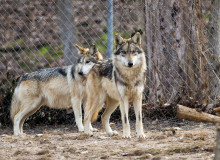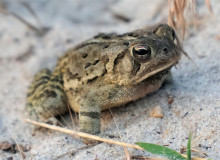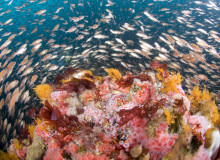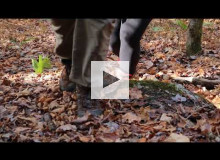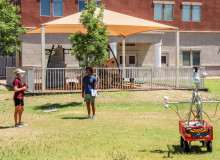Climate
Arizona State University
Government agencies, including the Arizona Game & Fish Department, and the private Endangered Wolf Center in Missouri have invested millions of dollars and decades worth of research to save the Mexican wolf from extinction.
Planet Forward Correspondent | University of Wisconsin-Madison
Wisconsin’s future may be warm, wet and insect-ridden, a new climate change study released by University of Wisconsin researchers finds.
Planet Forward Correspondent | George Washington University
Dr. Karen Lips hypothesized that the collapse of the amphibian populations was sweeping through Central America like a wave. So, in order to gather evidence for the theory, she would have to get out in front of this wave.
Planet Forward Correspondent | Ithaca College
A look at how fellow journalists combine filmmaking and activism when covering issues related to the climate crisis.
Planet Forward Correspondent | George Washington University
Our house is on fire and environmental activists are determined to put the fire out. Scroll through this photo essay for a look at those fighting to save our planet.
Planet Forward Correspondent | Northwestern University
Each year, the International Union of Conservation of Nature is finding more and more plant, animal and fungus species threatened with extinction across the globe. What could be causing it?
Planet Forward Correspondent | George Washington University
Who says that individuals can’t make a positive change right in their own communities? Three women share their journeys to living a more sustainable lifestyle.
SUNY ESF
After finding juvenile American Chestnuts during a hike with my dad, I discovered the historical journey and possible future of the American Chestnut.
Arizona State University
Extreme heat is particularly dangerous to children. But with no clear school heat policies and facing a lack of resources, how will schools keep kids safe as temperatures continue to rise?
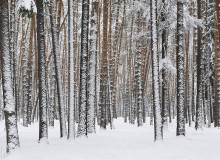
Climate change is threatening the ecosystem of tunnels beneath the snow, where many rodents, insects, microbes, and hibernators live during the cold winter months. (Aleks G/Creative Commons 3.0)
Planet Forward Correspondent | University of Wisconsin-Madison
Underneath the snow lies an ecosystem of tunnels where many rodents, insects, microbes, and hibernators live over the cold winter months. It’s called the subnivium, and it's threatened by climate change.

